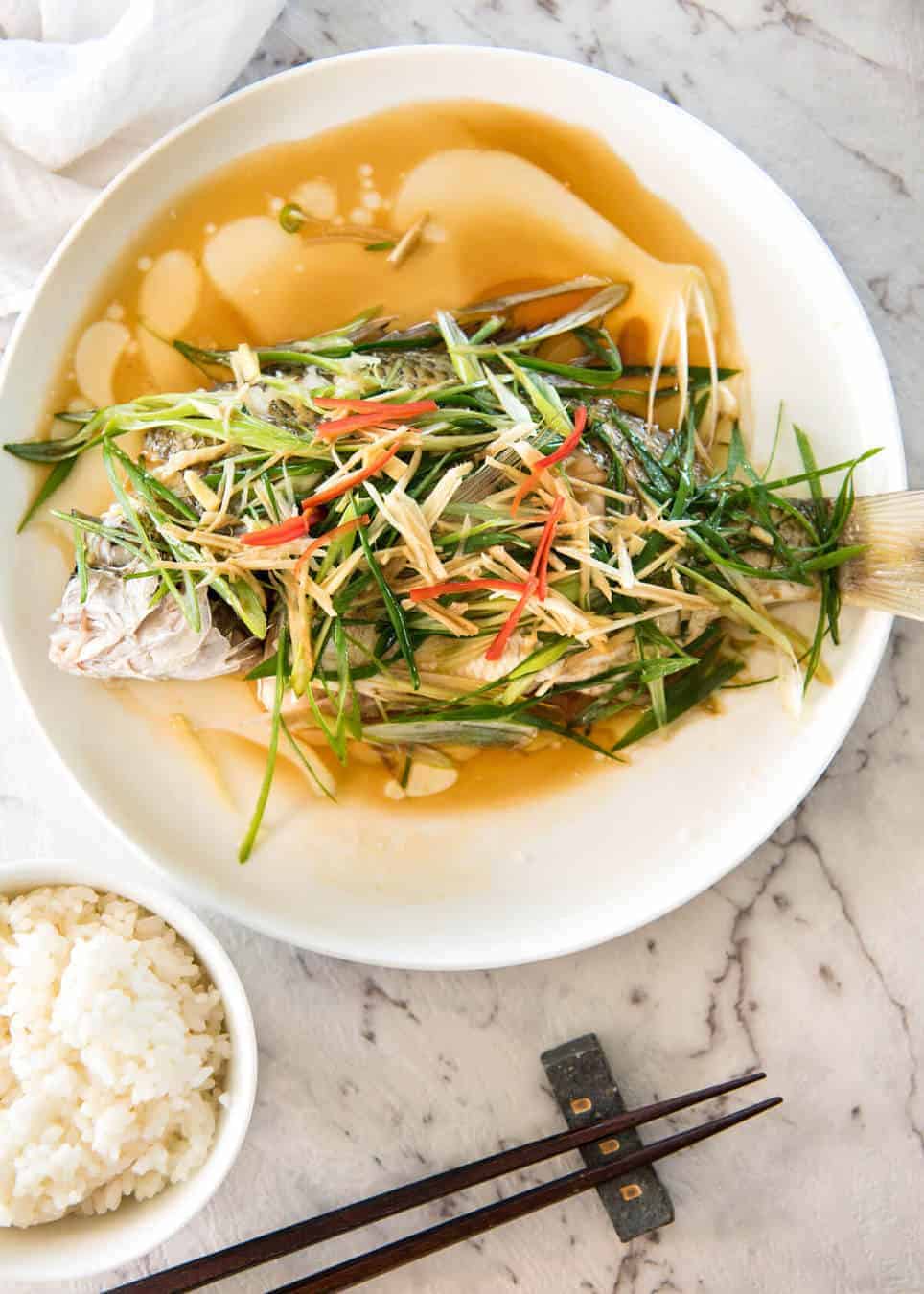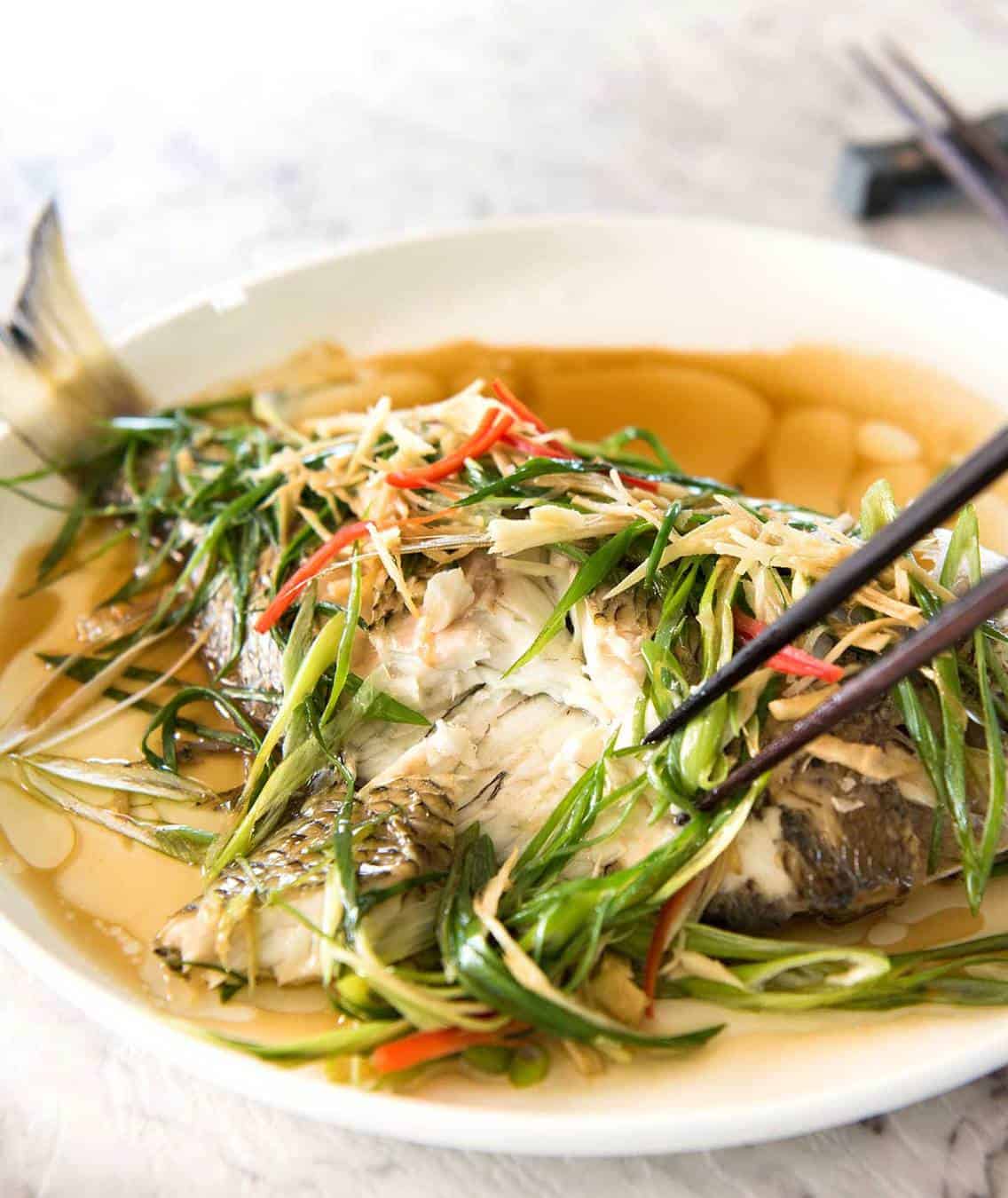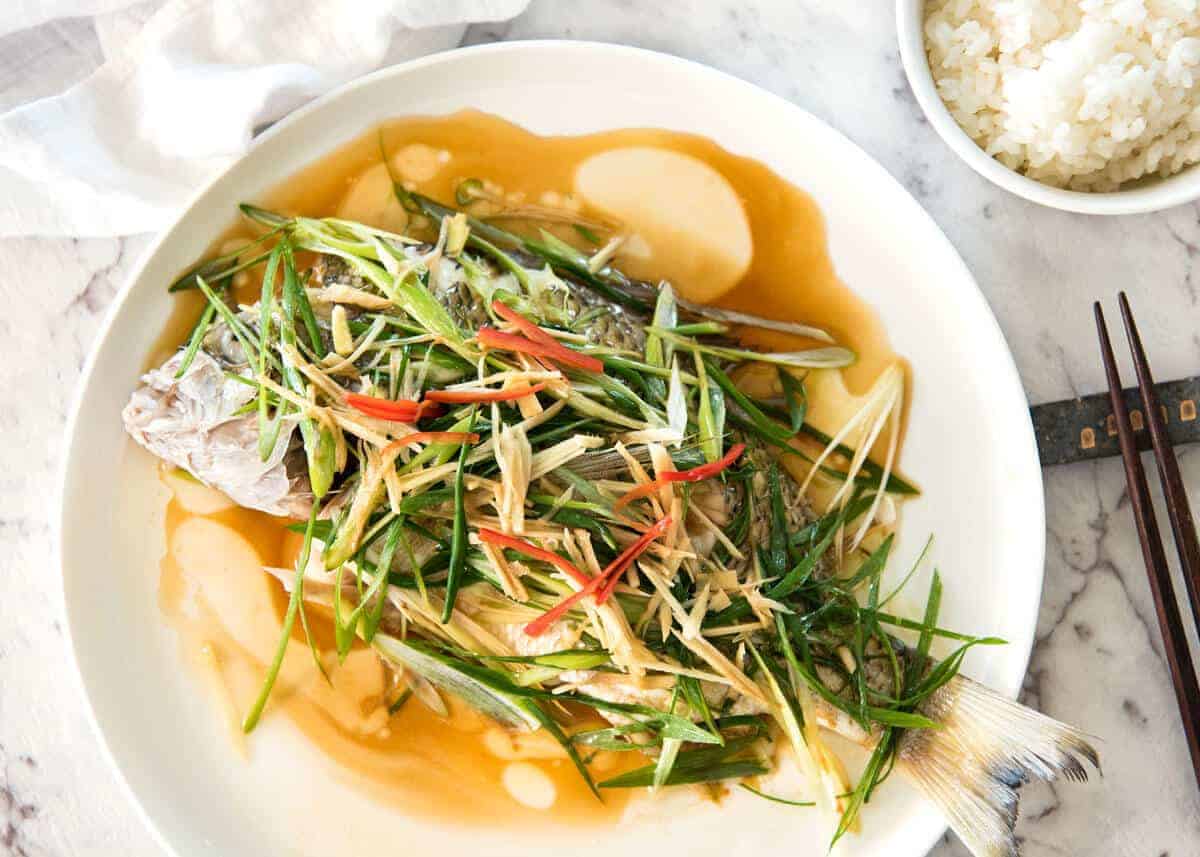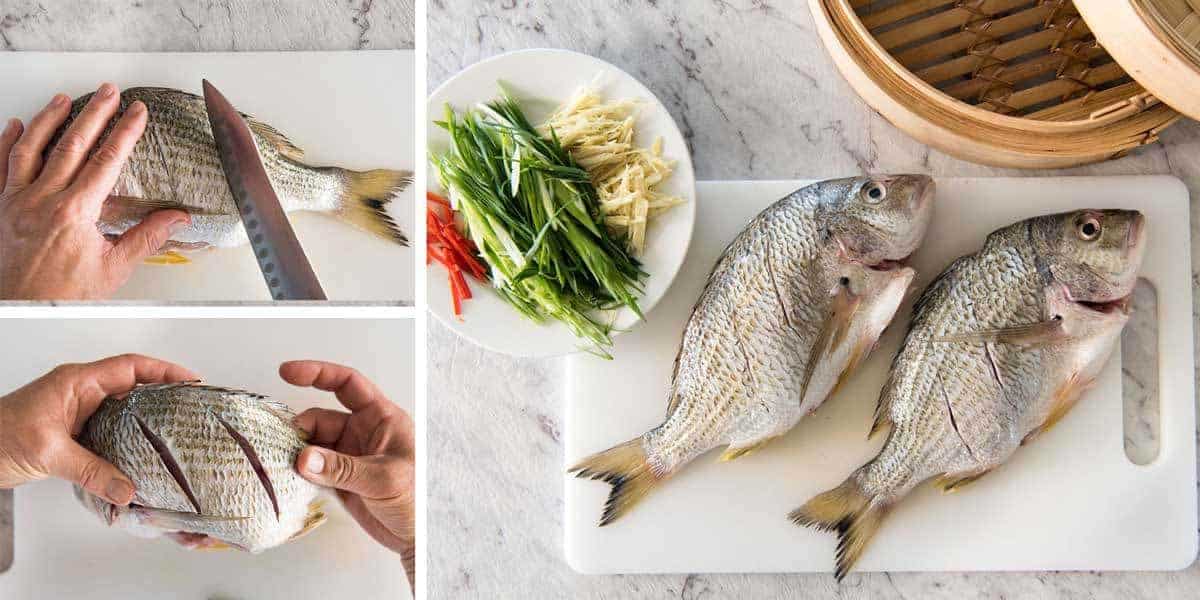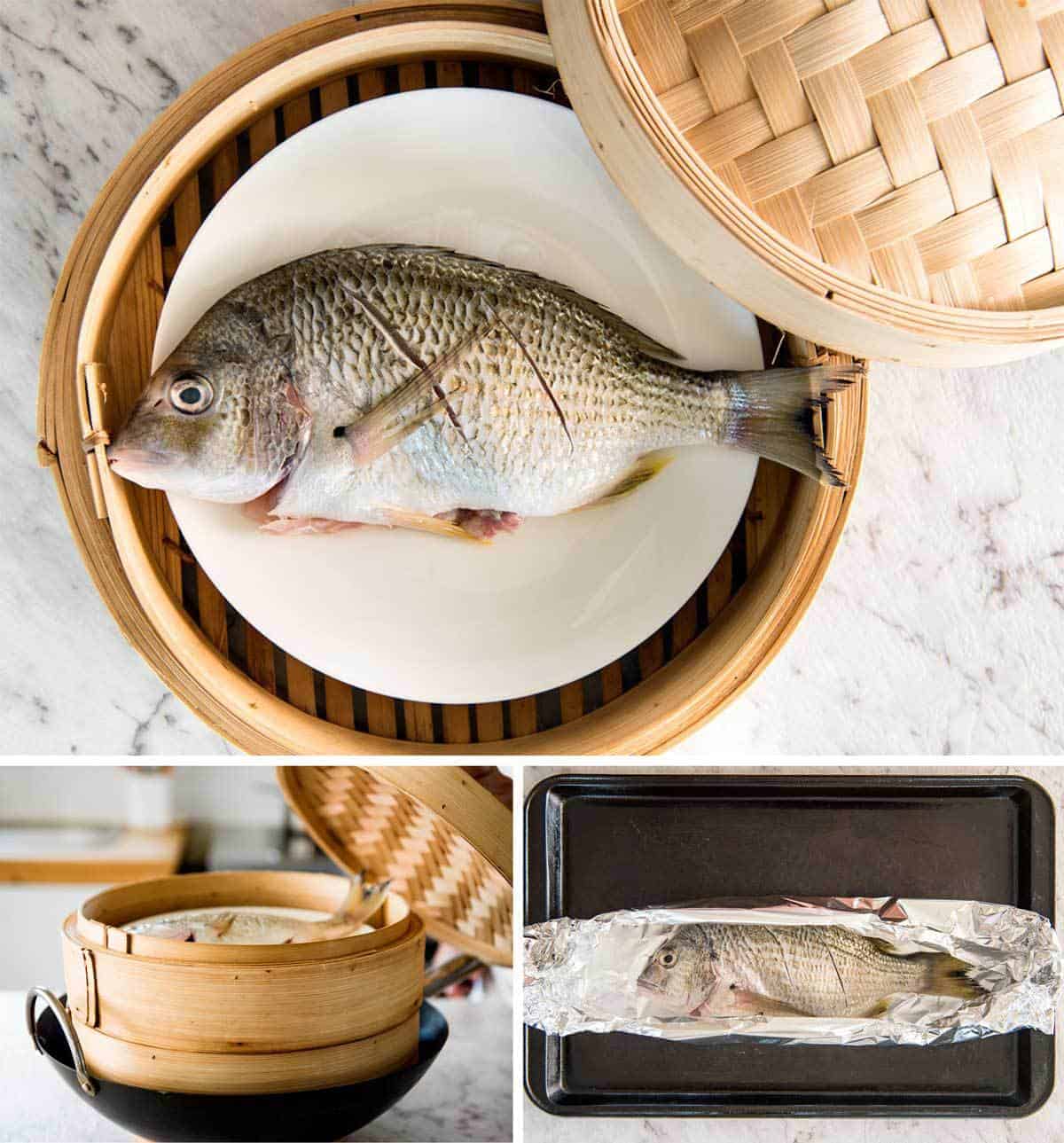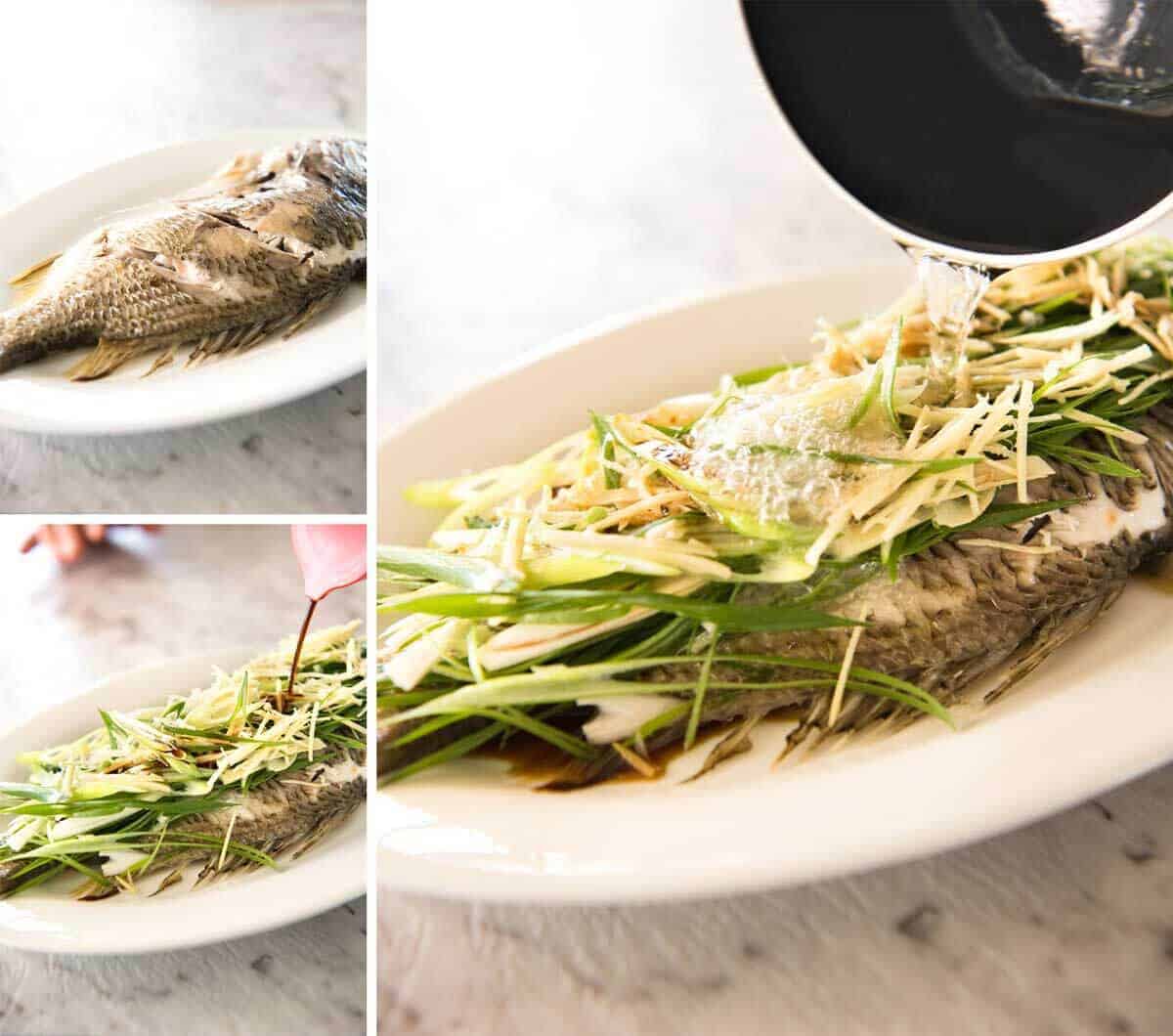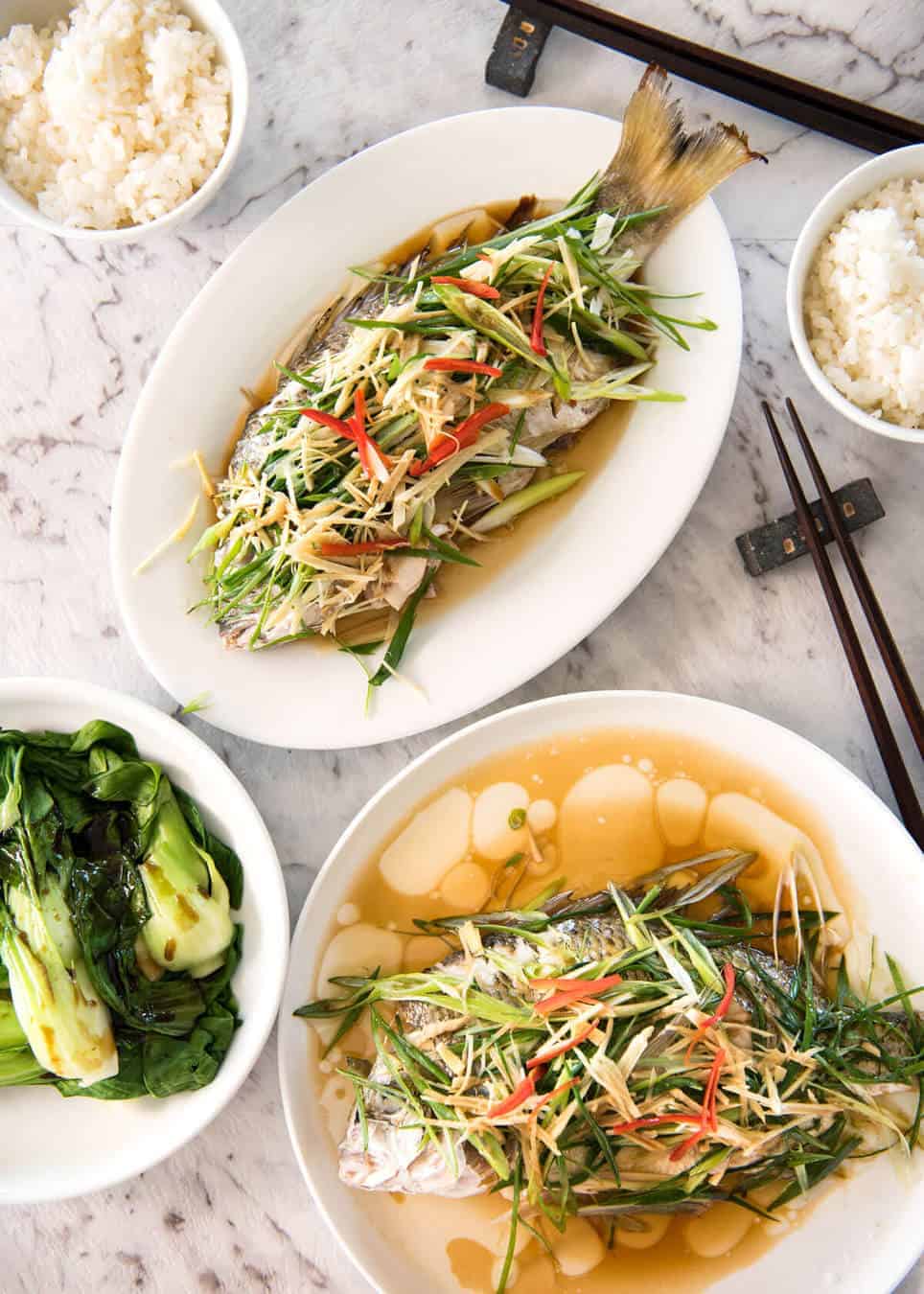I’ve been wanting to share this recipe for ages. It is probably my all time favourite whole fish recipe. I want to say it’s the one I make the most, but because it’s my mother’s recipe and she loves it too, she makes it on request demand request. So therefore, I actually very rarely make it myself. She came around to be my hand model / teach me to make this (properly) and was tapping her nails impatiently as I hurried to take photos. I snapped them in 3 minutes, then we plonked ourselves onto stools and ate these straight off the photo set up I had arranged on my kitchen bench top. Like mother, like daughter. And as we got stuck into our respective fish, we were both mumbling “OMG this is so good”. One in a Japanese accent, one in an Aussie accent, both muffled with our mouths full.
It never ceases to amaze me how such simple recipes can taste so incredible. This Chinese Steamed Fish with Ginger and Shallot Sauce is a classic example. It has so few ingredients and is so fast to make, my mother gets this on the table in 15 minutes. And while it is best made with whole fish (it’s just so much juicier!), it can even be made with fillets. And you don’t need a bamboo steamer! You can steam it in any steamer or you can bake it. More on that below.
This is how it goes down. Firstly, cut two slits on each side of the fish. This helps it cook evenly as well as making the sauce penetrate throughout the flesh.
For extra flavour, my mother drizzles the fish with a bit of Japanese cooking sake (Chinese cooking wine or dry sherry are alternatives that are just as good). Then if you are using a bamboo steamer, plonk the fish on a plate – makes it much easier to handle – then place the steamer on a wok filled with rapidly simmering water. If cooking 2, as we usually do, then just stack the steamers. Then just steam for 10 minutes. If, like me, you don’t have a bamboo steamer or other steamer large enough to fit a whole fish, the simple solution is to just bake it in foil. The fish is not quite as juicy simply because it doesn’t get the benefit of the moisture from steaming. But the difference is not very noticeable, especially if using a whole fish. For these photos, we steamed one and baked the other so we could compare them and agreed that the difference was small.
While the fish is cooking, chop up the ginger and shallots (aka scallions / green onions) and heat up a bit of oil in a small saucepan. Not much is required, just 2 tablespoons per fish. Once the fish is cooked, transfer it to serving plates. Pile on the ginger and shallots, then sprinkle with salt and drizzle with soy sauce and sesame oil. Now for my favourite part. Even when I was a kid and didn’t actually enjoy this dish that much, I would still dash to the table when my mother poured the hot oil over the top of the fish. It sizzles and bubbles on contact, and partially cooks the ginger and shallots.
When the oil is poured over the fish, it pools on the plate with the soy sauce, sesame oil and fish juices, forming the sauce. I know it doesn’t sound like an impressive recipe. But truly, that sauce is SO GOOD. Pick up a bit of the juicy fish flesh and squidge it around in the sauce and be amazed how something so simple can be so tasty. 🙂 For a little splash of colour, you could garnish it with some red chillies if you want. Not spicy ones, we used the long red chillies that are very mild. I know that many people are turned off by the thought of cooking whole fish. But I really hope that this inspires some people to give it a go! It really is easy and if you love Asian food, I really think you will enjoy this. – Nagi x PS Thought a recipe video would be helpful so you’ll find it below the recipe. ❤️ You will observe that the hands are not my Baby Hands. 😂 PPS Japanese dining etiquette is to always serve fish with the head pointing to the left. In the photo below I have one (illegally!) place diagonal, just to fit into the photo better! If the fish is being shared, the head should be such that it is pointing left in front of the eldest or most honourable person at the table. In Chinese etiquette, I understand that the fish head should be pointing towards the eldest of most honourable person at the table.
WATCH HOW TO MAKE IT
LIFE OF DOZER
This is why he wails mournfully when I tied him outside stores – because it works. Shop assistants are weak too.
SaveSave SaveSave
